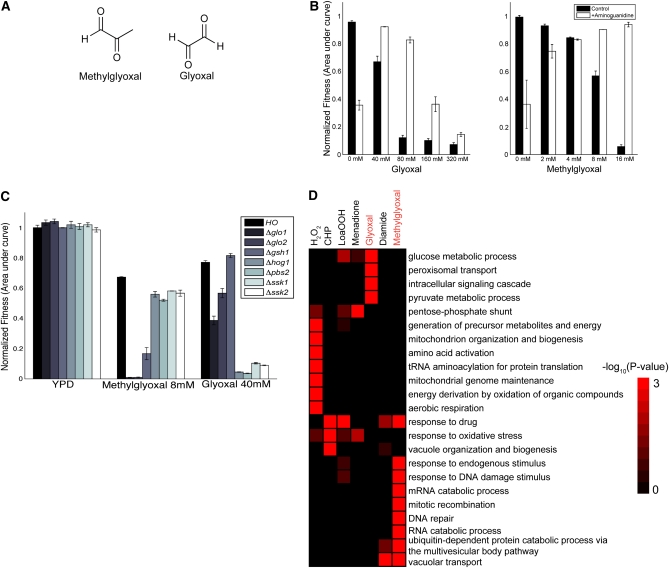Figure 1 .
Methylgloxal and glyoxal inhibit yeast growth. A) Chemical structure of methylglyoxal and glyoxal. B) Growth curve analysis for measuring the fitness of wild-type (HO) strain in glyoxal (left) and methylglyoxal (right) in the presence (black bars) and absence of 20 mM aminoguanidine (white bars). Fitness was quantified using area under growth curve and normalized to growth in YPD ± SD (n = 3). Growth inhibition caused by aminoguanidine in the absence of glyoxal and methylglyoxal is discussed in the text. C) Fitness of deletion strains in methylglyoxal and glyoxal ± SD (n = 3) analyzed by growth curve analysis. Strains selected were deficient in genes previously shown to be important for resistance to methylglyoxal stress in yeast. D) Heatmap representing significant GO terms of strains identified to be significantly sensitive (false discovery rate < 0.05) to methylglyoxal and glyoxal by pooled fitness screens. For comparison, we included strains identified to be sensitive to oxidants hydrogen peroxide (H2O2), cumene hydroperoxide (CHP), linoleic acid 13-hydroperoxide (LoaOOH), menadione, and diamide by a previous study (Thorpe et al. 2004). The heatmap is colored according to the P value of each GO term.

